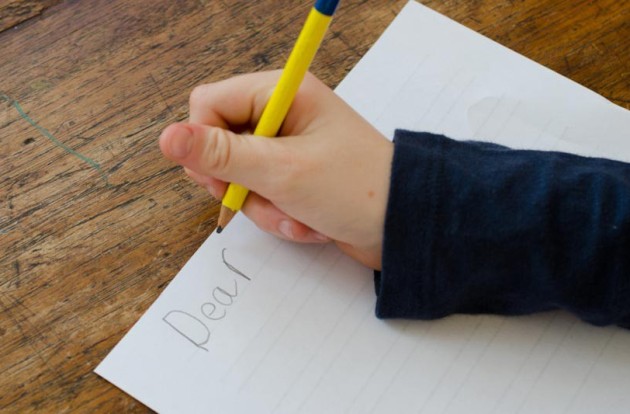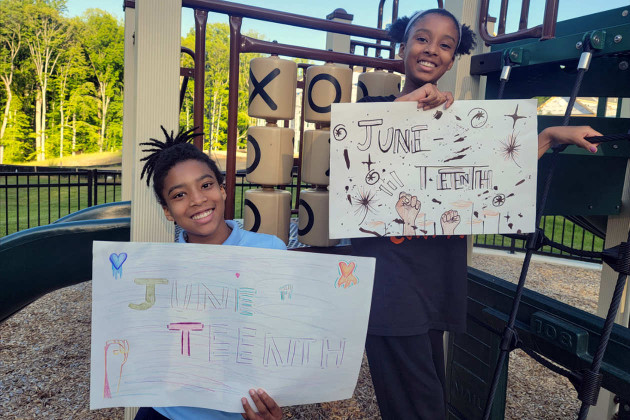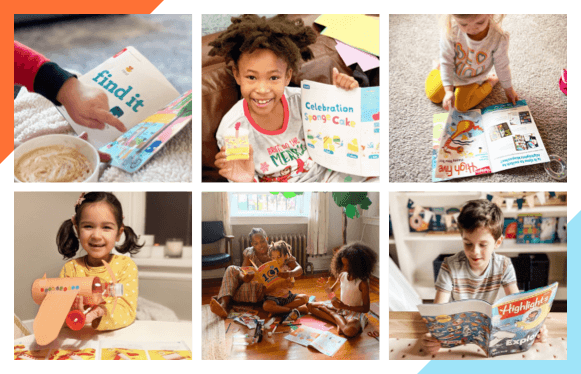5 Lesser-Known December Holidays Your Kind Kid Can Celebrate
By: Nancy Josephson Liff
For those who celebrate, Christmas is a chance to reflect on all the reasons we have to be grateful. But there are other lesser-known days in December that also give kind kids a chance to exercise their empathy. Celebrate kindness all month long by embracing these December holiday activities, and make it a December to remember.
Put gratitude on your to-do list. National Thank-You Note Day is December 26. Offer up this super-easy, kid-friendly method for writing thank you notes. Here’s what to do:
- Gather several sheets of colored paper; construction paper works best.
- Let your child select one sheet of paper to start. Show them how to cut or fold her future thank-you notes into greeting-card shapes. Repeat with other colors.
- Trim scraps of paper into equal-size pieces (1” x 2” or 2” x 3”) for front-page art, and set them aside.
- Show your child how to make thumbprint art to decorate the rectangles. Include thumbprint balloons, flowers, cats, dogs, stick-figure children, family members or anything else they like. Your child can place just one thumbprint figure on each piece of paper—or several. Set artwork aside.
- Help your child think up a list of short, sweet, age-appropriate words or phrases to describe the gift giver or their holiday presents. Consider expressions such as “I’m speechless,” “Wow,” or “You’re the best.” Set those aside, too.
- Show your custom-card designer how to make their own thank-you notes by mixing and matching the cards, thumbprints, and expressions of gratitude. Let them sign the cards and stuff them into envelopes. Easy. Fun. Done.
Give your life a once-over.
National Roof Over Your Head Day is December 3, but any time is a perfect time for kids to express their gratitude—for a roof overhead and everything inside. Help your child take stock of their many gifts, opportunities, and belongings, including their clothes, shoes, socks, coats, books, tunes, screens and games. Encourage your child to donate their own gently used toys and games to kids who haven’t any, visit a hospital that serves babies and young children or join you in community-based drives for homeless families in need of toiletries, coats and bedding.
Get down and dirty.
World Soil Day is December 5, so set aside time any day this month for your kid to dig down deep and explore terrain below the surface. There’s a lot to see there, including life-forms, rocks, sticks, leaves and soil that’s sticky or crumbly—it’s fascinating. Have a pail and shovel ready. Plan to read all about soil together. Gather cool facts like a scientist. Did you know a tablespoon of soil has more organisms in it than the earth has people? Or how about this one: it takes a minimum of 500 years to form one inch of topsoil. Gain new respect for the wonders of our eco-system.
Salute our heroes.
December 7 is Pearl Harbor Remembrance Day. Find time this month to bone up with your kid on U.S. history, the Pearl Harbor bombing and why one writer (Tom Brokaw) calls those who served in World War II the “greatest generation.” Tune into memorial services for WWII vets in real time on December 7, or catch up later with the evening news or videos you can find on YouTube.
Embrace a gratitude attitude.
Human Rights Day on December 10 celebrates the adoption of the Universal Declaration of Human Rights by the United Nations General Assembly in 1948. The document outlines 30 fundamental rights that people are entitled to across the world, to make sure basic human needs (shelter, food and water) and key civil, political, economic, social and cultural rights are spelled out and protected everywhere.
That’s a lot to ponder. But don’t bore kids with rhetoric. Instead, grab several sheets of happy-looking kids on stickers, a poster board and a calligraphy pen or big fat marker. Then list a few of the following rights on the poster board or have the kids do it. Let them go wild with stickers. To extend the activity, pick out the best ideas to discuss at dinner. Here, a few to get you started:
- No one has the right to hold you in slavery.
- Everyone has the right to practice a religion.
- You have the right to seek legal help if your rights are violated.
- Everyone is innocent until proven guilty.
- You have the right to privacy. No one can interfere with your reputation, home, family or correspondence.
- You have a right to free thought and to express your opinion.
- People have the right to an adequate standard of living for themselves and their family.









